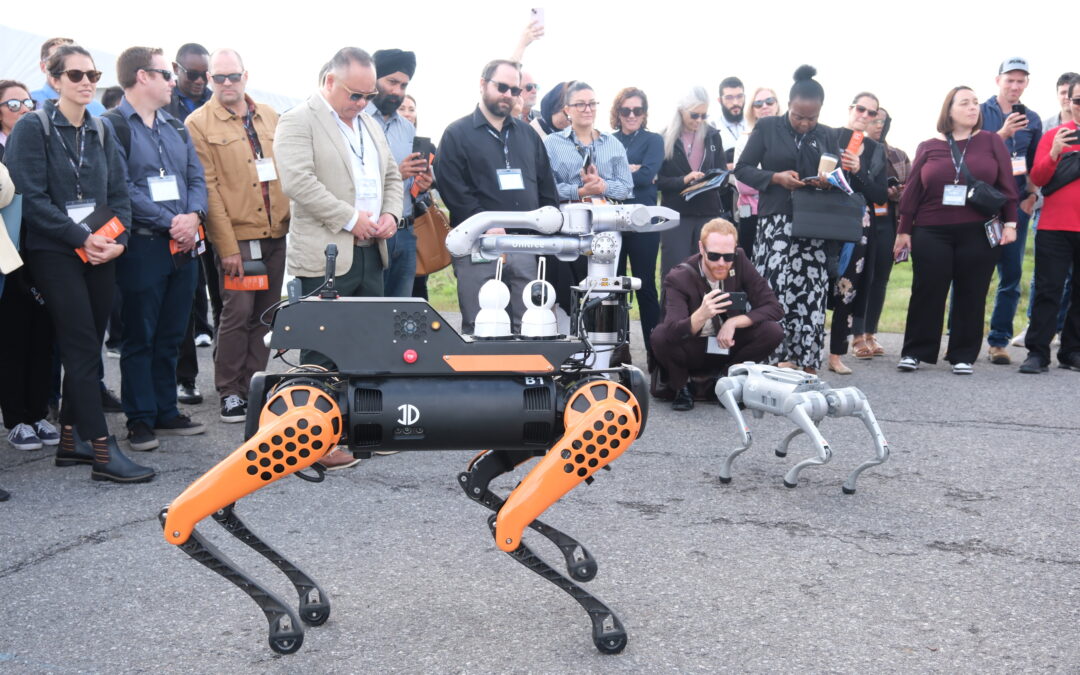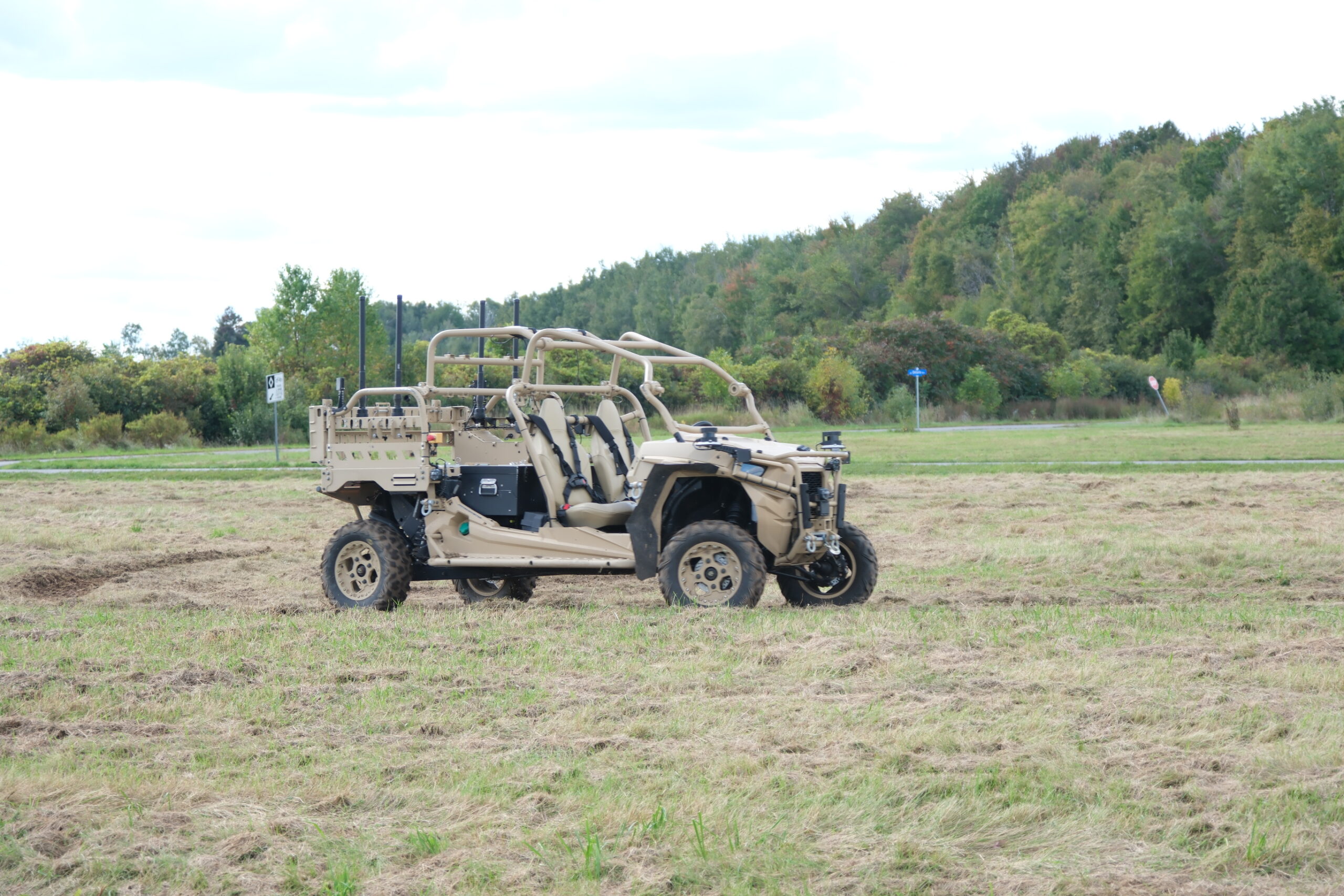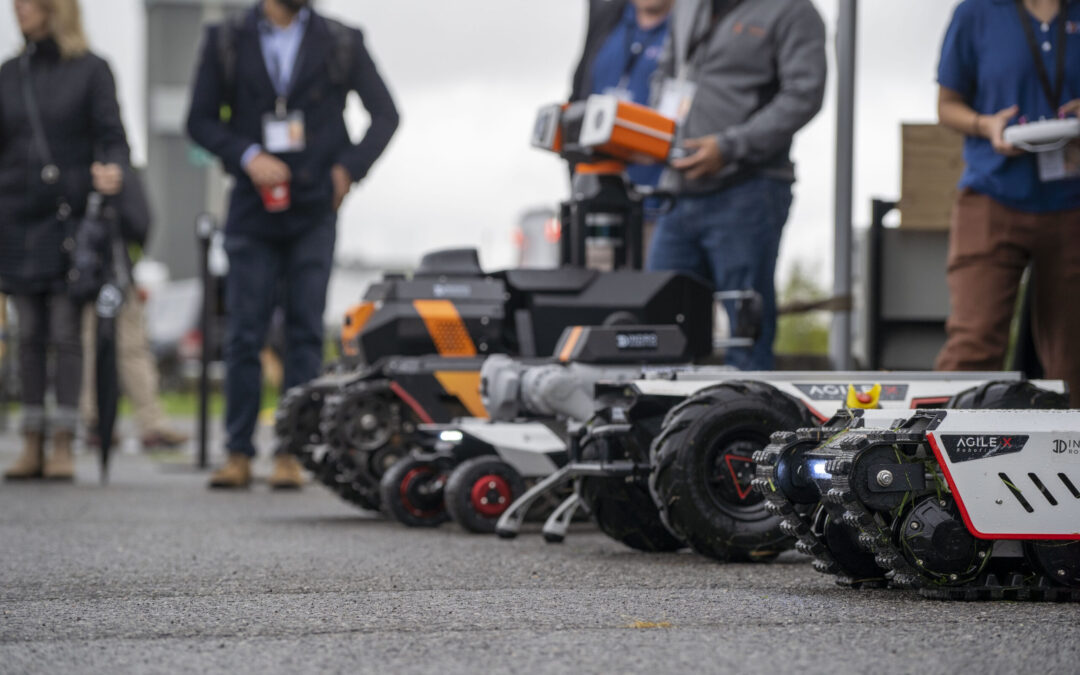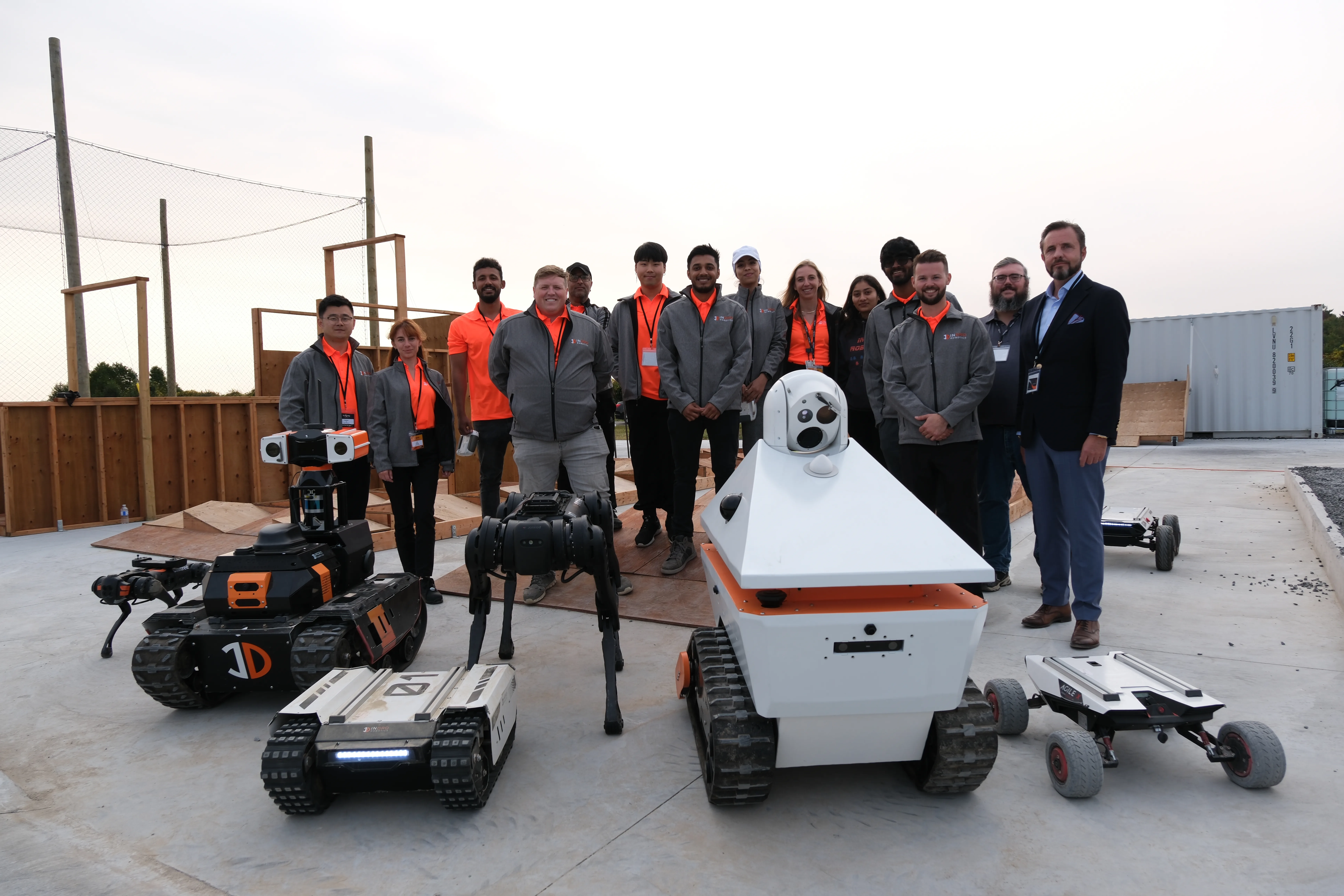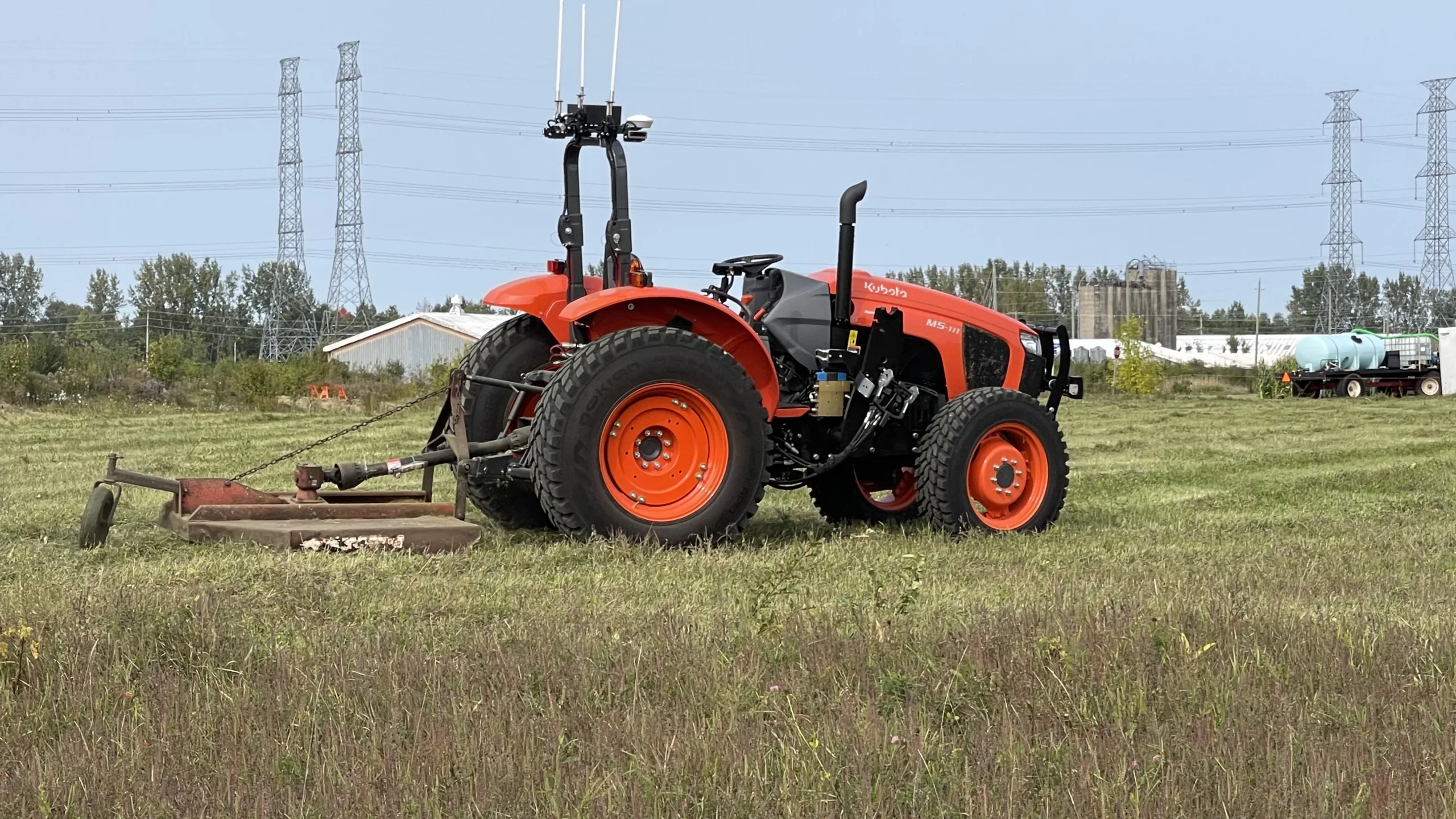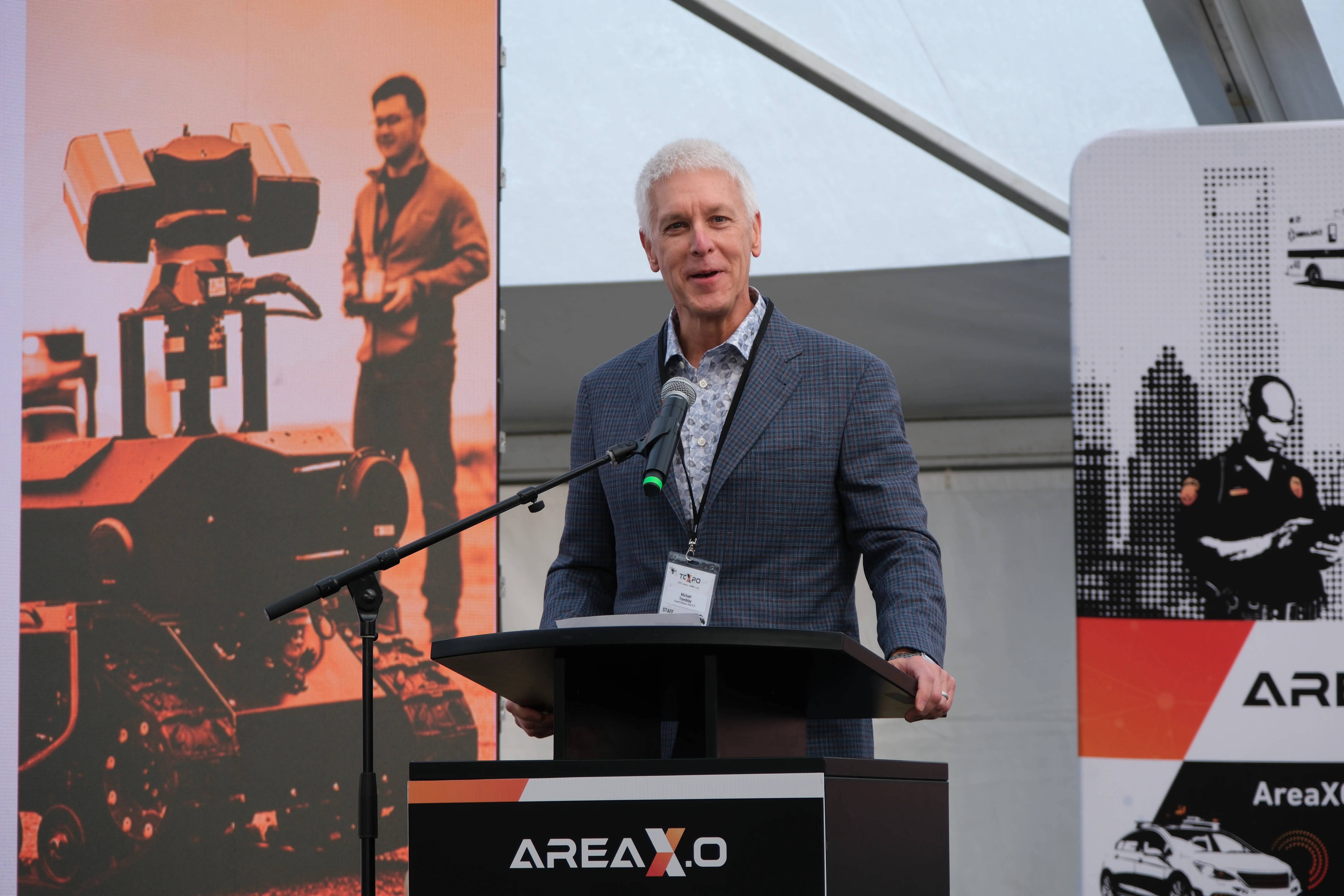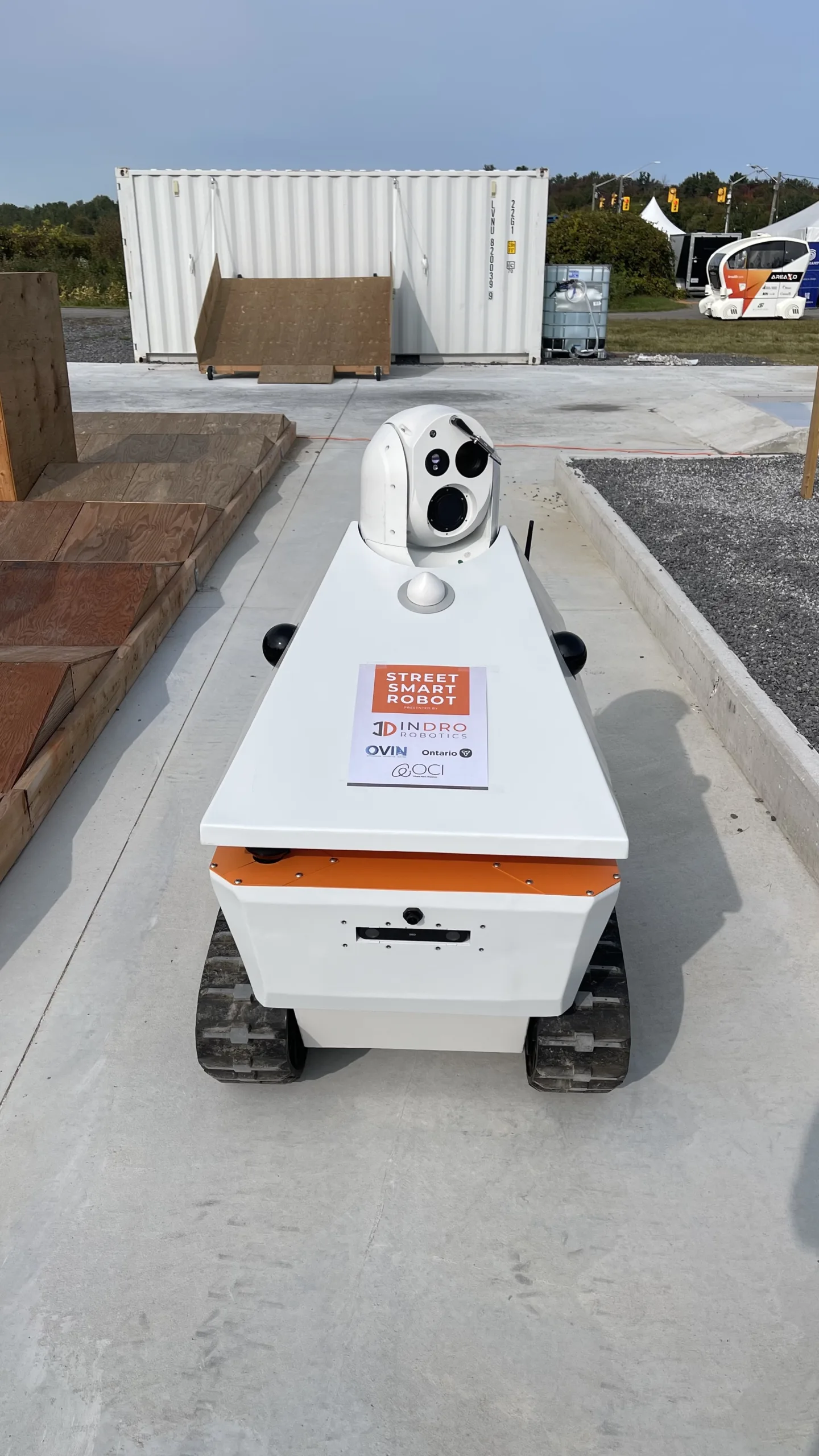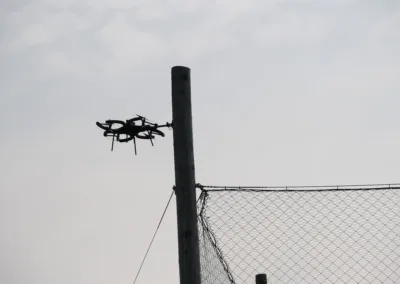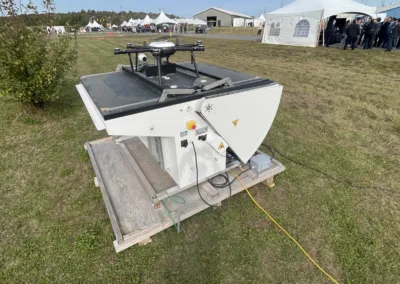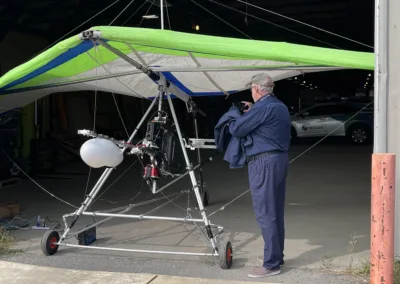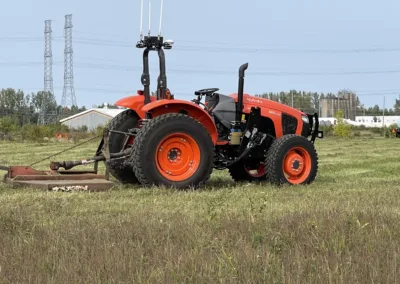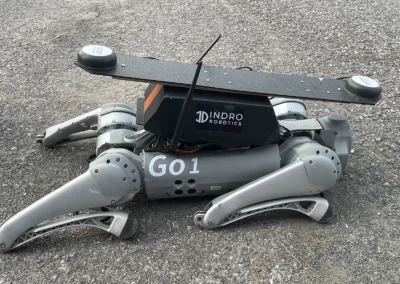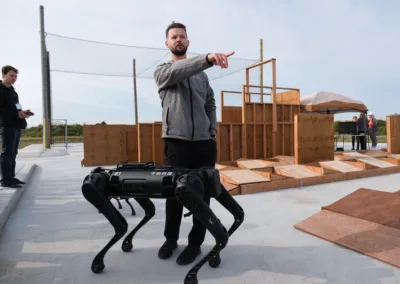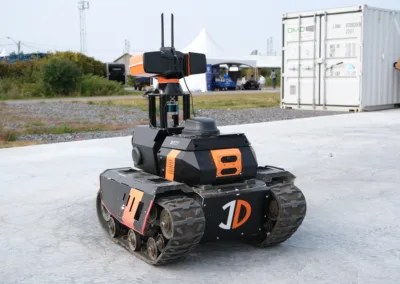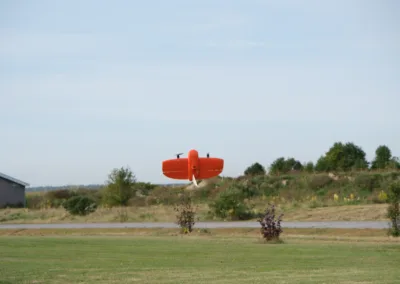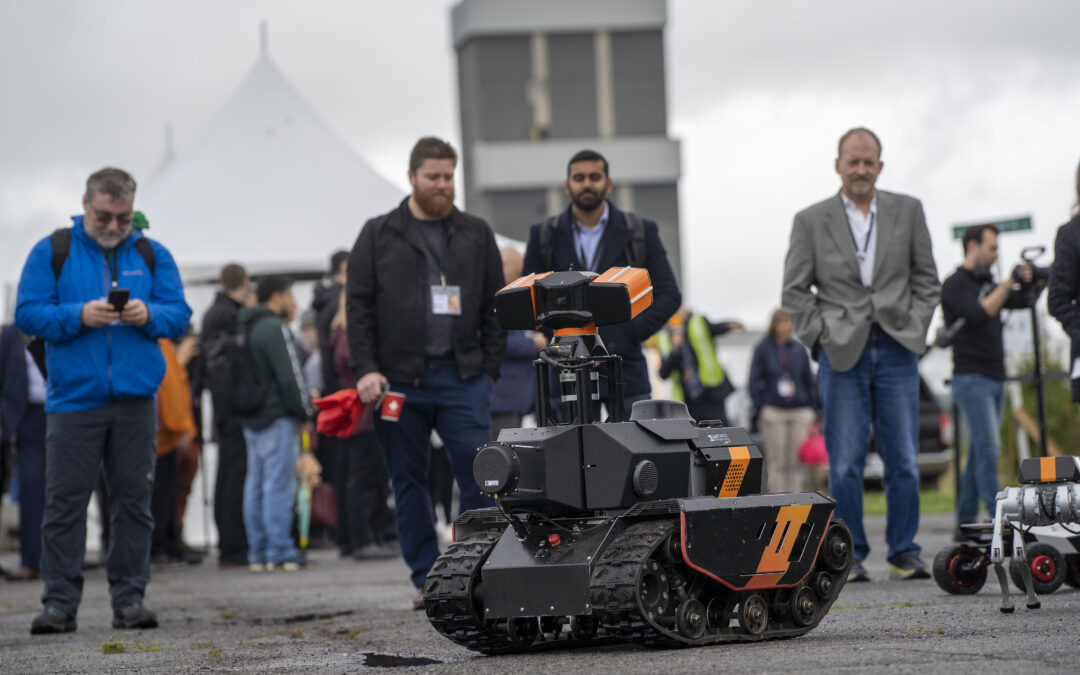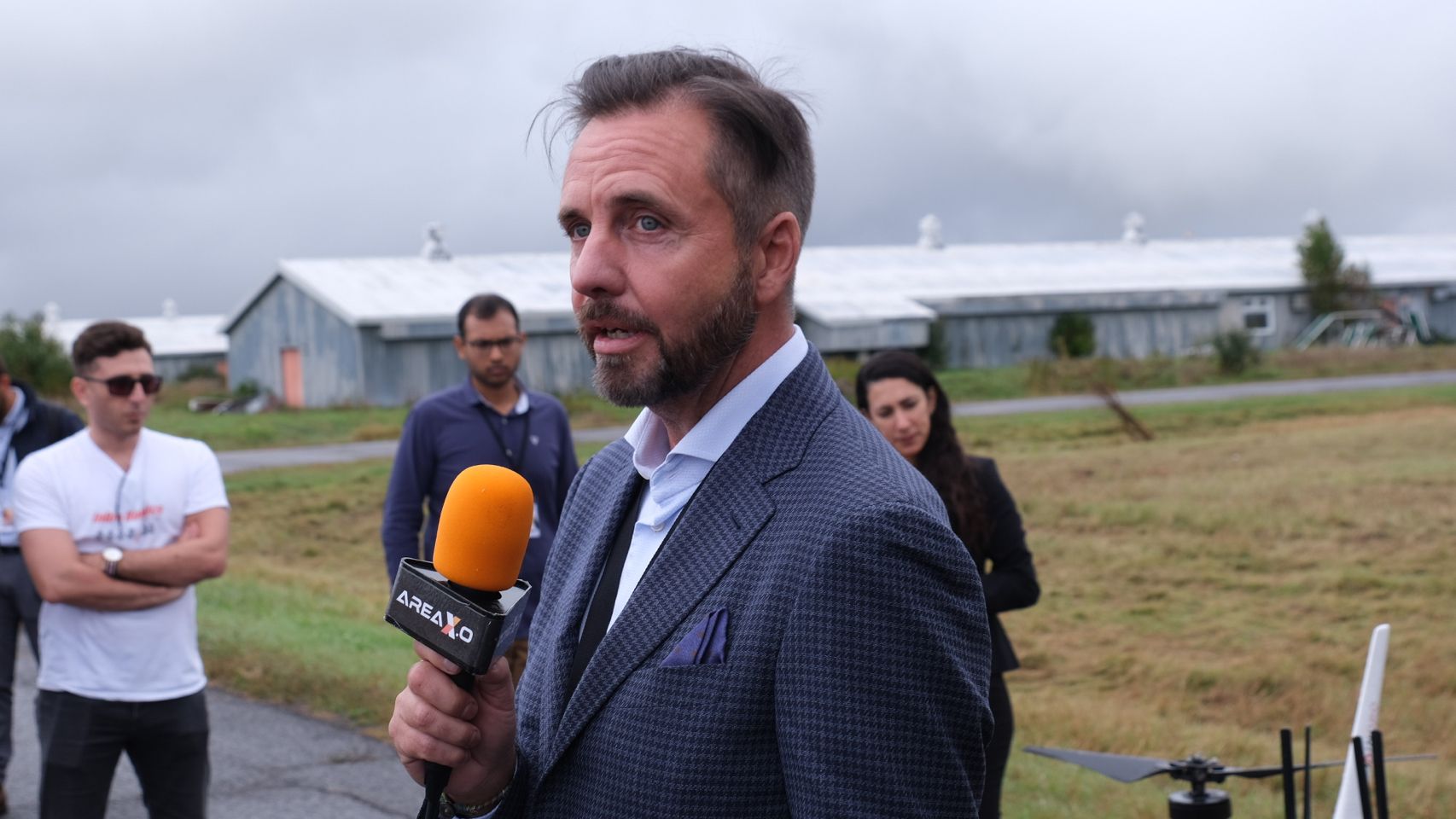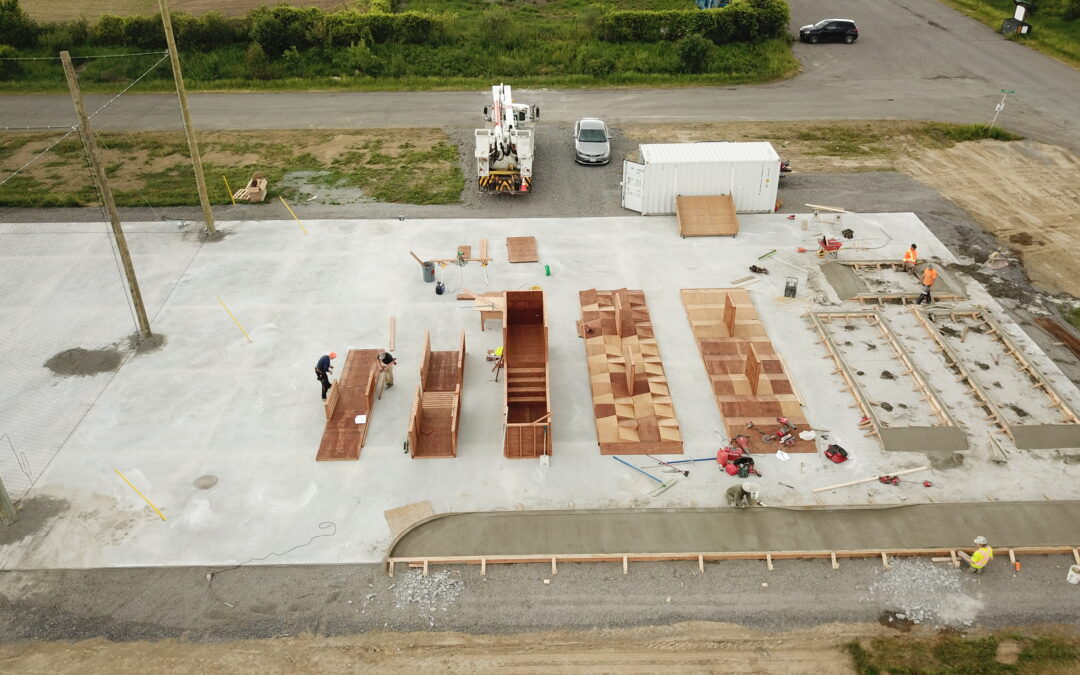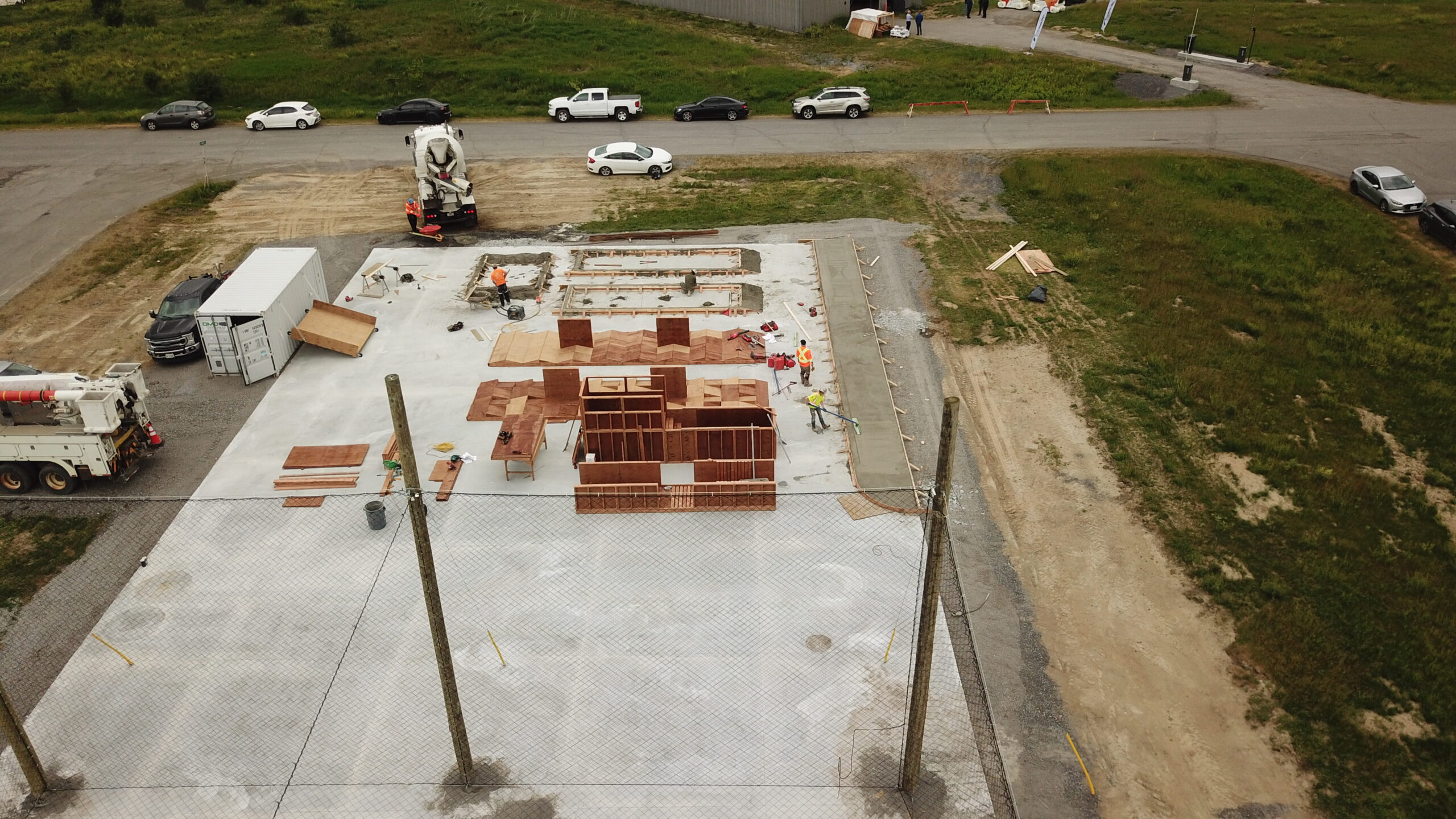
GCXpo 2025: Another successful showcase of cutting-edge technology
By Scott Simmie
GCXpo 2025 is a wrap.
Canada’s premiere next-gen tech showcase featured exhibits from more than 70 cutting-edge companies, multiple panels and fireside chats, some 2,000 registered attendees – and even a keynote speech from the Federal Minister of National Defence.
Oh. And there were a lot of wasps. But they were a minor inconvenience on a day where the focus was on “solutions that our planet needs now more than ever,” said Invest Ottawa President and CEO Sonya Shorey during brief opening remarks. Those solutions ranged from made-in-Canada robotic arms through to robotic agriculture equipment and even new long-range and AI-enhanced drones capable of all manner of data acquisition.
The event, as always, took place over the sprawling grounds of Area X.O (pronounced “X dot oh” in case you ever wondered), a private 750 hectare (1850 acres) complex that serves as a key hub for leading R&D and technology companies in the nation’s capital. The gated facility includes 16 kilometres (10 mi) of roads and test tracks for testing autonomous vehicles, along with its Drone and Advanced Robot Training and Testing facility (DARTT) – built to meet the demanding standards of the National Institute of Science and Technology (NIST).
It’s the perfect location (and had, thankfully, perfect weather) for such an ambitious event. Organised by Invest Ottawa, multiple federal departments, funding agencies and companies (including InDro) sponsored the event.
“It’s an incredible constellation of partners – we do nothing in isolation,” said Shorey.
This year’s GCXpo was not only the biggest yet, but it also noted a shift. There was a greater presence of dual-purpose devices that could be used for defence purposes, along with suggestions we’re in a rapidly changing geopolitical world where it’s in Canada’s best interests to be pushing the tech envelope. Chris Pogue, President of Defence and Space at Calian Advanced Technologies, suggested during the opening ceremony we are at a highly significant point in history:
“(It’s) a moment when defence, Canadian sovereignty, and the ability to build Canadian national capacity is more important than it’s ever been since the Second World War.”
Below: Head of R&D Sales Luke Corbeth demonstrates a humanoid InDro has extensively modified for work in hazardous environments. Image two: Detail of the InDro “backpack” that vastly enhances the robot’s capabilities
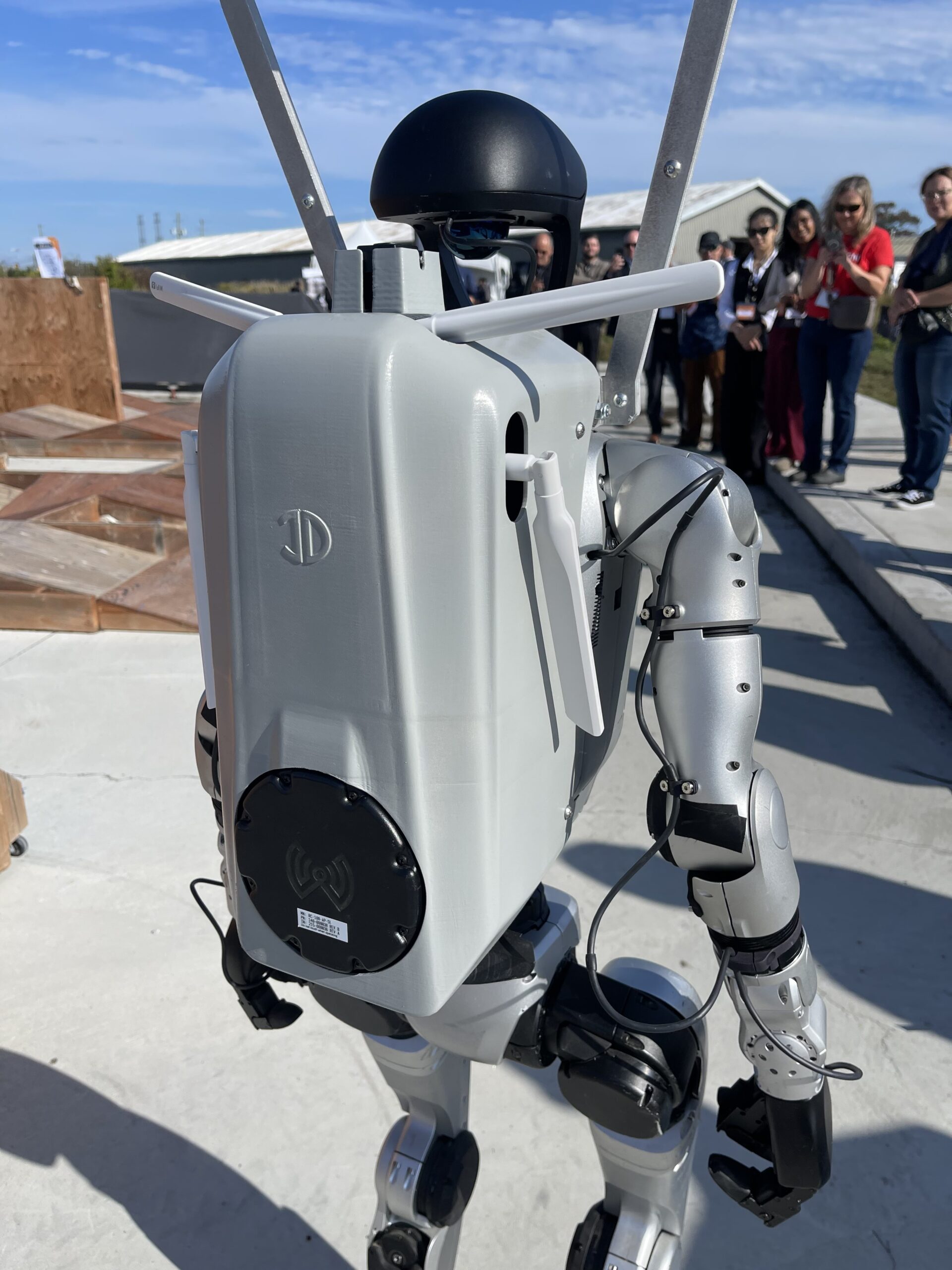
COOL STUFF
There’s always new and interesting things to see while walking the site – plus great opportunities to learn at the many panels (which took place in three separate zones). But a few things caught our eye.
One of them is a new AI drone company called Pelican Autonomy. The company has just recently emerged from “stealth” mode. It’s parent company Lemay.AI, which serves sectors ranging from pharmaceuticals and AgriTech through to aerospace and defence. Pelican Autonomy produces drones of varying sizes, ranges and payload capacities depending on use-case. Specialising in object detection and GPS-denied navigation, the company has been working behind-the-scenes at a rapid pace.
“We decided to build our own UAVs back at CANSEC 2024. We basically went from idea to flyable prototypes since then,” explains Project Lead Vlade Shestakov. “Now that we’ve made a number of successful prototypes, we’ve decided to make ourself known – and because we’re looking for funding we could potentially get some partners here.”
Its large drone (a fixed-wing, dual-engine tail-sitter) can carry a 25kg payload and has an estimated range of 400-500 km.
“It can be a full range of custom solutions – pipeline detection, collaborative mapping, disaster relief – and many others,” he says.
Ottawa-based firm A.I.rShare (“AirShare) was showing its low-cost counter-drone solutions – which are look like tiny missiles
“We provide low-cost, low-collateral counter drone solutions,” explained Missile and Fire Control Designer Luke Skinner. And with developments like we’ve seen in the Ukraine-Russia conflict, there’s clearly a need for C-UAS solutions.
“Lots of people are now buying cheap drones and attaching weapons to them – bombs, mortars, things like that. Right now the missiles being designed for this cost way more than the drones, orders of magnitude greater. Our idea is to bring the cost of the missile down to the cost of the drone. We do that through 3D printing and off-the-shelf components.”
The missiles use hobby rocket motors and are launched via a radar-guided turret. AirShare’s software determines where and when to fire (including how many missiles) for an intercept.
“The missiles deploy a large cloud of lift-disrupting countermeasures that get stuck in the propellors or air intake. Lots of people are doing things like lasers, jamming, but with new fibre optic controlled drone those don’t work so well.”
Below: Indro’s Training and Regulatory Expert, Kate Klassen, on an industry panel around certification, compliance and global standards
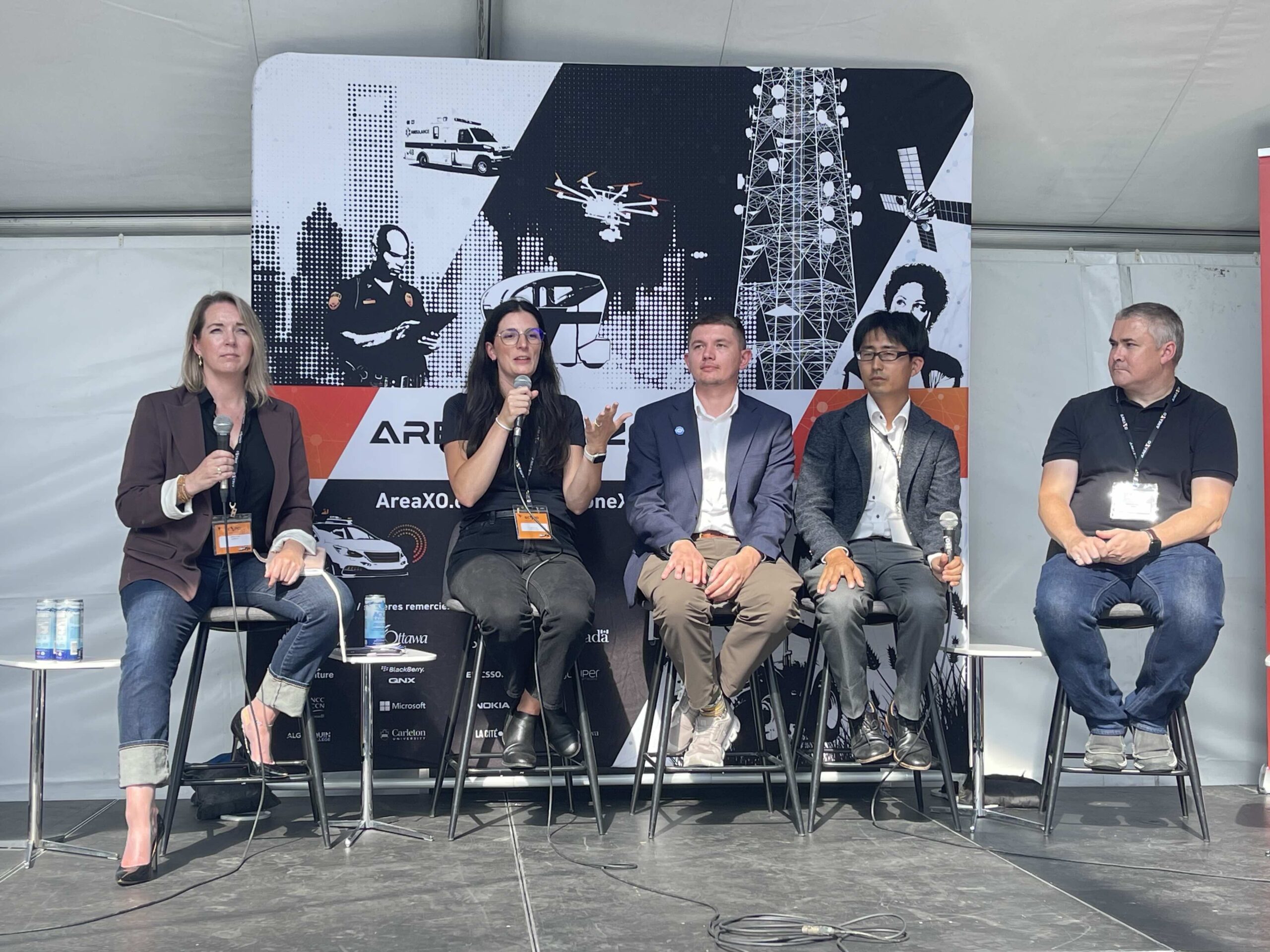
THE BIGGER MESSAGE
As flagged during opening remarks, we are in a changing world – one where AI and other technologies will play an increasingly important role during uncertain geopolitical times. A standing room-only keynote featured Federal Minister of National Defence, David McGuinty.
“Canada is going to have to be ready…not just to respond, but to lead,” said the Minister. As part of that, he said, the country is working on its first-ever Defence Industrial Strategy – and will be committing vastly more money in this area. As part of meeting Canada’s NATO commitment, he said, the country will be devoting five per cent of its GDP by 2035.
“This is a $9.2 billion investment which will strengthen our forces…enhance our infrastructure and boost our operational readiness….Every defence dollar spent is intended to reinforce Canada’s sovereignty, advance our national security, and fuel home-grown innovation,” he said.
He then expanded on the increasingly significant role Canadian technology companies will play.
“This is what I do know, and for sure: I know that at the heart of the strategy is you. The innovators, the investors, the risk-takers, the entrepreneurs, and the startups. You’re going to help us develop the dual-use technologies that are going to shape the future of defence and security,” he said.
A similar call came earlier in the day from Christine Hanson, Regional Director for North America at NATO’s DIANA program, which issues technology challenges on behalf of NATO partners and funds selected participants. The program was established in 2021 to help NATO maintain its technological edge.
“NATO Nations are really facing unprecedented challenges,” she said, emphasising how important it is “That these technologies are making us more secure and more safe” – adding DIANA is currently engaged in “important conversations around procurement and the speed of acquisition.”
Below: Canada’s National Minister of Defence, David McGuinty
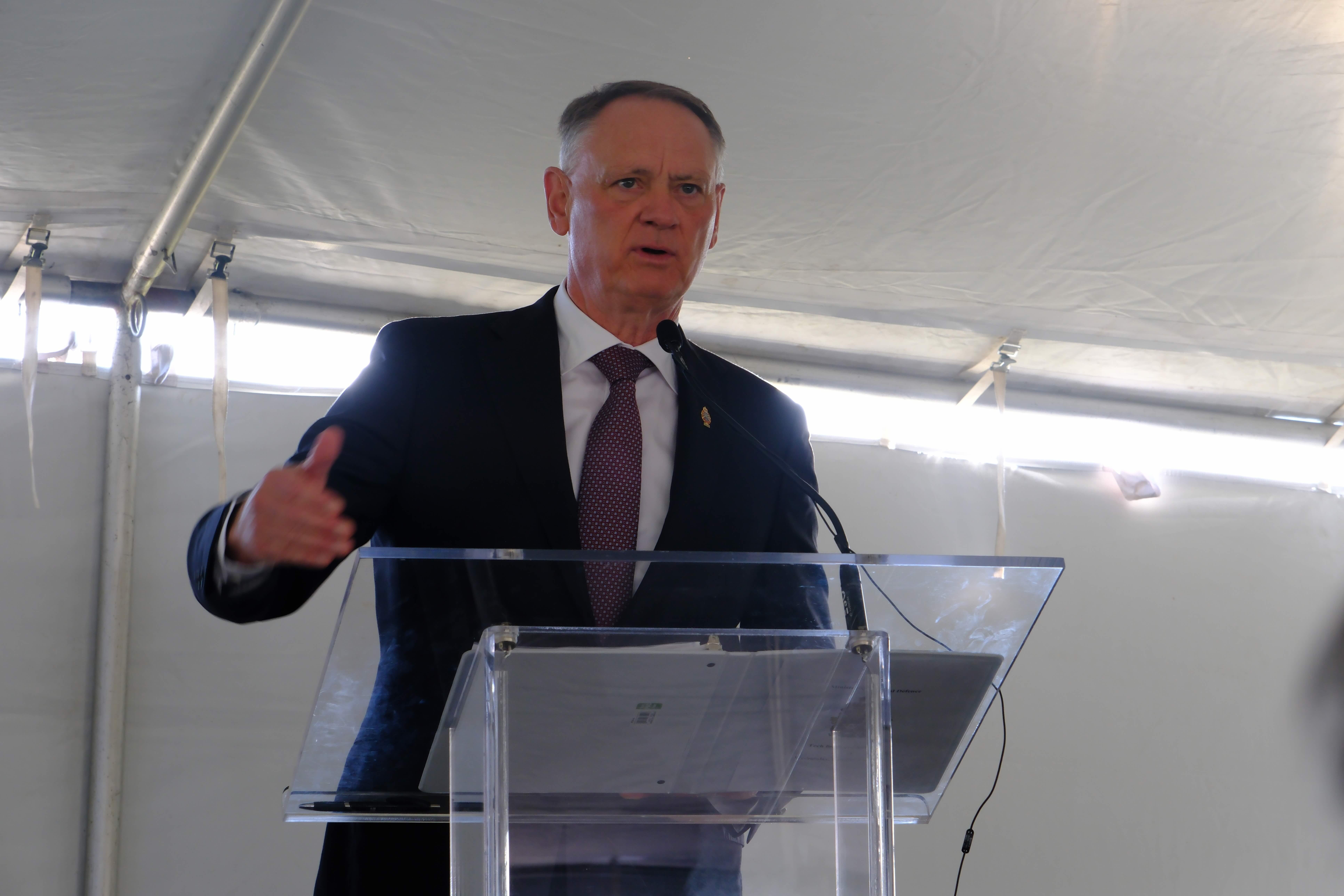
INDRO’S TAKE
GCXpo is always a big event for us – and for the industry-at-large. This year was no exception. But there was definitely an emphasis on the importance Canada (and NATO) is now placing on developing new and innovative dual-use technologies – meaning they can be used both for defence/sovereignty as well as having other real-world applications.
“It is indeed a changing world, and technology will play an unprecedented role as we move forward,” says InDro Founder and CEO Philip Reece. “InDro already has some dual-use projects underway that we believe will be of benefit, while also standing true with InDro’s long-standing principles of positive use-case scenarios. We’d also like to thank Invest Ottawa and the many organisers of this year’s event – it truly is Canada’s premiere showcase of its kind.”
We look forward to GCXpo 2026.

